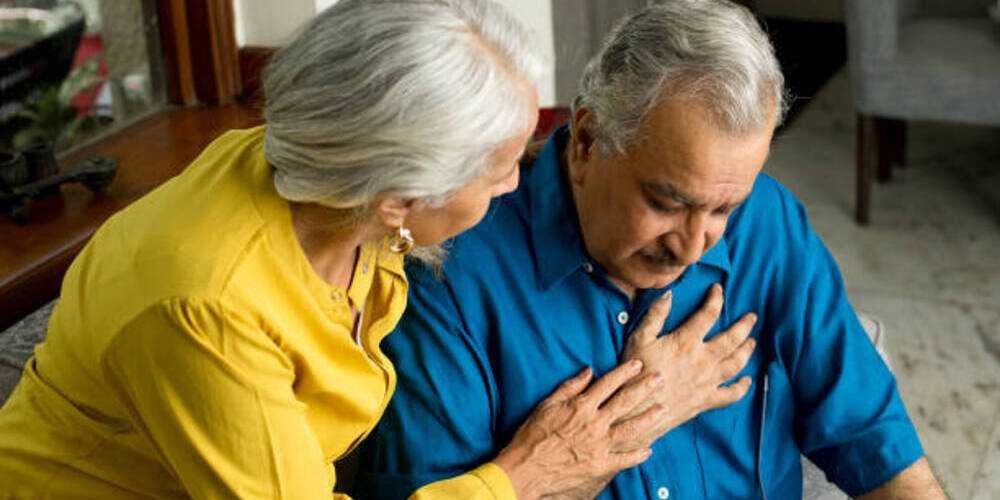
Infection Causes Heart Inflammation! Endocarditis Causes, Symptoms, Diagnosis, Treatment
What is endocarditis?
The heart itself can be divided into three layers: endocardium, myocardium, and epicardium from the inside to the outside. Endocarditis generally refers to inflammation of the endocardium layer.
Endocarditis can be caused by microorganism infection, called infective endocarditis. These pathogenic microorganisms can be bacteria or fungi. If it is caused by non-microbial causes, it is called non-infective endocarditis.
Because the endocardium connects the heart valves, inflammation of the endocardial layer often leads to valvular disease. If endocarditis is not treated promptly and properly, it may damage the heart valves and cause valvular heart disease, which is life-threatening. This article focuses on infective endocarditis.
Although infective endocarditis is not common, once it occurs, the human body has no countermeasures against the bacteria that breed in the heart. In particular, the symptoms of endocarditis are somewhat similar to those of a cold, making it easier for patients to ignore it and delay medical treatment. .
Types of endocarditis
Infective endocarditis can be divided into the following 2 categories according to the speed of symptom onset and the pathogenic bacteria:
- Acute endocarditis:
onset occurs quickly, within days or weeks. The pathogens are mostly Staphylococcus aureus, β-hemolytic streptococci and aerobic Gram-negative bacilli (GNB). - Subacute endocarditis:
onset is slower, possibly 6 weeks to several months. Staphylococcus aureus, Viridans group streptococci (VGS), Enterococci, and HACEK group bacteria are the main pathogenic bacteria.

It is worth mentioning that not all endocarditis is caused by microbial infection, but there are fewer patients with non-infectious endocarditis. The following are related symptoms of non-infectious endocarditis:
- Nonbacterial thrombotic endocarditis (NBTE):
caused by vegetations (Vegetation) produced by the accumulation of blood, fibrin, and platelets on the valves. These growths are usually smaller and cause less damage to the valve. - Libman-Sacks endocarditis:
occurs in patients with autoimmune diseases such as lupus erythematosus. - Blood clots that form after valve surgery.
- Löeffler endocarditis:
caused by blood clots caused by an excess of eosinophils.
Causes of infective endocarditis
Infective endocarditis occurs when bacteria enter the bloodstream, travel through the heart, and attach to abnormal heart valves, such as mitral valve prolapse with atresia, bicuspid aortic valve, or Caused by damaged heart tissue (eg, rheumatic heart disease, aortic calcification). Most cases of endocarditis are caused by specific bacteria, but fungi or other microorganisms may also be responsible.
In most cases, your immune system destroys harmful bacteria that enter your bloodstream, and even if the bacteria reach your heart, they pass right through without causing an infection. However, bacteria harboring in other parts of the body such as the mouth, throat, skin or intestines may, under the right conditions, cause serious infections such as endocarditis. The bacteria, fungi, or other species that cause endocarditis can enter your bloodstream through the following:

- Daily oral activities:
Brushing your teeth or other activities that cause gums to bleed can introduce bacteria into the bloodstream, especially if you don’t floss or if your teeth and gums are not healthy. - Infections or other conditions:
Bacteria are spread from infected areas of the skin. Other conditions including gum disease, sexually transmitted diseases, or certain intestinal diseases (such as inflammatory bowel disease) may also allow bacteria to enter the bloodstream. - Catheters:
Catheters are thin tubes used by doctors to inject fluids into patients. When the catheter is left in place for a long time, it increases the risk of bacteria entering the bloodstream. - Contaminated needles:
Including tattoos, piercings, or injecting drugs (such as heroin, cocaine), etc., all require the use of needles inserted into the skin, but usually non-medical injections are more likely to be caused by contaminated needles Bacteria enter the bloodstream. - Certain dental procedures:
Some dental procedures cut your gums, which can allow bacteria to enter your bloodstream. - Prosthetic valve:
Non-natural valves can easily lead to endocarditis. The types and clinical manifestations of pathogenic microorganisms are related to the time of valve replacement. For example, endocarditis that occurs within 2 months of valve replacement is mostly related to contamination during the surgery, and the bacterial species are mostly staphylococci, enterococci, Gram-negative bacilli, and fungi; endocarditis that occurs 2 months after valve replacement Endocarditis is more likely to be caused by coagulase-negative staphylococcus (CoNS).
Symptoms of infective endocarditis
The rate at which endocarditis develops varies depending on the agent of the infection and whether the patient has other heart disease. Some people’s symptoms progress slowly, while others have a sudden onset. Generally speaking, patients with endocarditis may experience the following symptoms (approximate probability of occurrence is in parentheses):
1.Common symptoms
- Flu-like symptoms, such as fever (80~90%), chills (40%)
- Fatigue (40%)
- Joint and muscle pain (15%)
- Night sweats (25%)
- Nausea (25%)
- Cough (25%)
- Unexplained weight loss (25%)
- Difficulty or rapid breathing
- Chest pain when breathing
- Swelling of feet, legs, and abdomen
2.Other symptoms
- Embolism is greater than 50%.
- High C-reactive protein (CRP) and high erythrocyte sedimentation rate (ESR): (90~100%).
- Heart murmurs: New murmurs or changes in existing murmurs warrant increased alertness (85%).
- Hematuria (30~50%), proteinuria (50~65%).
- Splenomegaly (20~57%).
- Purpura (Petechiae): Purple or red spots appear on the skin, whites of the eyes or mouth (20-40%).
- Osler’s nodes: a type of red tender spot on the tips of fingers or toes (10-23%).
- Splinter hemorrhage under the nails: (15%).
- Clubbing of fingers: (12~52%).
- Janeway lesions: Painless erythematous or bleeding spots (less than 10%) that appear on the soles of the feet or palms.
- Retinopathy: 2 to 10% have Roth’s spots, which are characterized by white or lighter spots formed by coagulated fibrin in the center of Roth’s spots.
- The number of white blood cells is usually normal, but if the vegetation becomes purulent, the number of white blood cells will increase.
When should you seek medical advice?
If you have any of the above signs or symptoms, you may consider consulting a physician. Especially those who have heart disease, are at high risk for heart disease, or have experienced endocarditis, they should pay special attention to whether they have any of the symptoms mentioned above and seek medical diagnosis as early as possible to avoid worsening of the condition.
Risk factors for infective endocarditis
As mentioned earlier, the human body’s immune system is usually able to protect the heart and prevent bacteria from attaching to the heart. Moreover, the endocardium of normal people is very smooth, making it difficult for bacteria to invade.
In contrast, if the endocardial surface is rough, or patients suffer from heart valve disease, including damaged valves or patients using artificial valves, the risk of bacterial attachment and growth may increase. Of course, endocarditis occasionally occurs in healthy individuals. The following are possible risks of endocarditis:
- Artificial heart valve:
Bacteria are more likely to attach to artificial heart valves than to normal heart valves. - Congenital heart defect:
If you are born with a specific heart defect such as an abnormal heart or abnormal heart valves, you have a higher chance of heart infection. - Have had endocarditis:
Endocarditis can damage heart tissue or heart valves, increasing the risk of future heart infections. - Damaged heart valves:
Rheumatic fever can damage and scar the valves, increasing the risk of endocarditis. - Illegal intravenous drug use:
People who use illegal intravenous drugs are at higher risk of developing endocarditis. The needles used to inject drugs may be contaminated and carry bacteria that can cause endocarditis.

Complications of infective endocarditis
After the bacteria attach to the heart (usually the valves), they will gradually grow and form vegetations. The presence of vegetations indicates a poor prognosis. These growths may, after peeling off, flow around the body along with the blood, and eventually get stuck somewhere, causing blood vessel embolism.
If the vegetation occurs on the right heart valve, it will cause pulmonary embolism after detachment. If the vegetation occurs on the left heart valve, it will cause embolism in the brain, kidneys, spleen and the heart itself. The following are possible complications of endocarditis:
- pulmonary embolism
- heart failure
- enlarged spleen
- kidney damage
- abscesses
- Stroke
- Epilepsy
Diagnostic approach to infective endocarditis
Your doctor will determine whether you have endocarditis based on your medical history, current signs, symptoms, and test results. The diagnosis of endocarditis is generally based on several factors rather than positive test results or symptoms alone. Your doctor may order several tests to make a correct diagnosis, including:
- Blood bacterial culture:
Determining whether there are bacteria or fungi in the bloodstream is an important test for diagnosing endocarditis. Special attention should be paid to bacterial species that are difficult to culture, such as the HASEK group, which includes 5 species of bacteria, all of which are Gram-negative bacilli and usually occur in endocarditis caused by native valves. Although it only accounts for 3% of all infective endocarditis, it must be cultured successfully with Chocolate Agar under 5% CO2. In addition, there are bacterial species that can cause culture negative results, such as the extremely rare Tropheryma whippelii and Bartonella. These bacterial species are difficult to detect through blood bacterial culture. - Echocardiography:
Using transthoracic echocardiography (TTE) or transesophageal echocardiography (TEE), dynamic images of the heart can be seen to check whether there are vegetations on the heart. Since the sensitivity of TTE for the diagnosis of endocarditis is low (65%), the absence of abnormalities on TTE does not exclude the diagnosis of endocarditis. At this time, TEE must be performed again, because TEE is more sensitive (95~100%) and can detect smaller vegetations and internal structures of the heart. It is more helpful for the diagnosis of endocarditis caused by artificial valves and can also detect valves. The affected range of the valve can be used as the basis for valve surgery. - Electrocardiography:
Patients with endocarditis can find conditions such as atrioventricular block, atrial fibrillation, and bundle branch block through electrocardiography. - Chest X-ray:
Doctors can use X-rays to see if endocarditis is causing the heart to enlarge, or if any infection has spread to the lungs. - CT scan or MRI:
If your doctor thinks the infection has spread to the brain, chest, or other parts of the body, a CT scan or MRI may be done to check those areas.
Treatment of infective endocarditis
We already know that the cause of infective endocarditis is a bacterial or fungal infection, so antibiotics are the mainstay of treatment. Depending on the patient’s condition, surgery may be needed to repair or replace a damaged heart valve or to make sure no infection remains. (Extended reading: Children abuse antibiotics! 4 risks and side effects you must know)
Antibiotic
Patients with infective endocarditis need to receive intravenous antibiotics in the hospital. The doctor will use a blood culture test to determine the type of bacteria causing the infection, and then select the most appropriate antibiotic or combination of antibiotics for treatment based on the blood test results.
In principle, the treatment of endocarditis must use effective targeted and bactericidal (Bacterocidal) rather than bacteriostatic (Bacteriostatic) antibiotics, high doses, injections, and longer-term antibiotic treatment. In order to fight against the tough bacteria that are protected by biofilm and enter hibernation.

Once intravenous antibiotics are started, hospitalization is usually required for 2 to 6 weeks. After discharge from the hospital, please continue taking antibiotics according to the doctor’s instructions and do not stop taking antibiotics without authorization to ensure that the treatment is effective. Always tell your doctor if you have signs or symptoms of a worsening infection, including:
- fever
- Chills
- Headache
- joint pain
- Difficulty or rapid breathing
- Also, if you have trouble breathing or swelling in your legs, ankles, or feet after starting antibiotic treatment, see your doctor right away. These symptoms may mean you are at risk for heart failure.
Operation
If endocarditis has caused damage to the heart valve, it may be necessary to replace it with an artificial valve. However, in order to avoid postoperative infection, antibiotic treatment is generally given priority. Surgery can only be considered after the bacterial infection has recovered. In addition, endocarditis caused by fungal infection may also require surgery and drug treatment.
Prognosis of infective endocarditis
Generally speaking, the mortality rate of infective endocarditis within 6 months is about 22-27%. If the causative bacteria is Staphylococcus aureus and the patient is older than 50 years old, the mortality rate can reach 50%. If endocarditis is combined with aortic insufficiency, the mortality rate can reach 50%.
The prognosis is poor if the patient has congestive heart failure, neurological defects, or if the prosthetic valve develops endocarditis within 2 months of replacement.
How to prevent infective endocarditis?
- Understand the signs and symptoms of endocarditis:
If you have any signs or symptoms, seek medical attention immediately. - Take extra care of your dental health:
brush and floss your teeth and gums regularly, and visit your dentist regularly. - Avoid possible skin infections caused by:
body piercings or tattoos. - Preventative medication:
If you have valve disease or have had artificial valve surgery, tell your doctor about your medical history before having dental treatment (especially extractions). Physicians may consider giving extensive antibiotics to reduce the risk of endocarditis.












